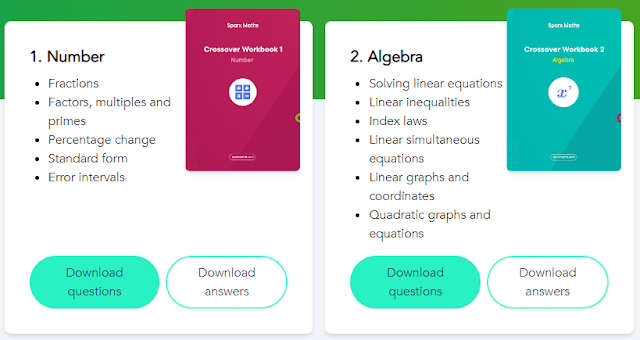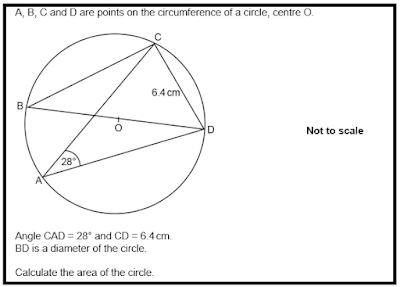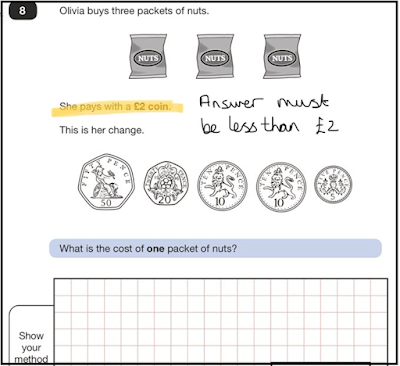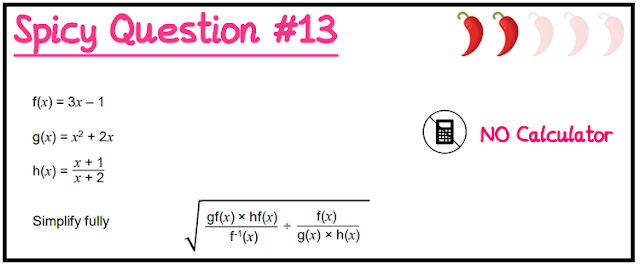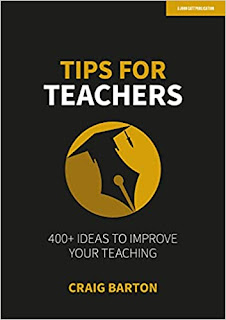 Welcome to my 166th gems post. This is where I share some of the latest news, ideas and resources for maths teachers.
Welcome to my 166th gems post. This is where I share some of the latest news, ideas and resources for maths teachers.1. Mixed Interwoven Revision Tasks
@nathanday314 shared a set of interwoven revision tasks aimed at Year 11. These excellent tasks are editable and suitable for projecting on the screen.
@nathanday314 shared a set of interwoven revision tasks aimed at Year 11. These excellent tasks are editable and suitable for projecting on the screen.
@studymaths did a conference presentation on completion tables or 'fill in the blanks' activities. I've always been a big fan of this task format which features so much opportunity for challenge and reasoning. There are loads of lovely examples on @studymaths' Twitter feed. Here are a couple that I particularly like. First, one on standard form.
And second, one on functions - the idea for this one came from @PaulRodrigo2718.
3. Sparx Workbooks
Sparx Maths has shared a free set of Crossover Workbooks - these might be helpful for GCSE revision or intervention sessions.
Speaking of intervention, I've recently started running a Year 11 maths intervention in tutor time and I wrote a thread about how I'm structuring it. It includes a link to the diagnostic test that I used at the start of the intervention.
4. Formula Sheet Tasks
This year our students will receive formula sheets in their GCSE, and we need to make sure they know how to use them effectively. It's possible that they will forget they have this sheet in the exam because they're not used to using one. I've previously blogged about resources that students can use to practise using the formula sheet, including these 'Assessment Aid Tests' from @taylorda01 and these formula sheet tasks and PowerPoints from @Just_Maths. Thanks to @colleenyoung for drawing my attention to another resource: formula sheet tests from OCR. These are useful no matter what awarding body you use. OCR has also published some formula sheet top tips.
5. Problem Solving Techniques
Thanks to @SarahFarrellKS2 for sharing a blog post about supporting students with problem solving techniques. This is aimed at primary teachers but there's lots of sensible advice for everyone. It features resources for teachers and maths leads to use.
Thanks to @SarahFarrellKS2 for sharing a blog post about supporting students with problem solving techniques. This is aimed at primary teachers but there's lots of sensible advice for everyone. It features resources for teachers and maths leads to use.
Update
There are two things you only have one more day to do:
- Book a place at the Joint Conference of Mathematics Subject Associations and receive the early bird discount. This takes place at Warwick University in the Easter holidays. I've booked my place! I'm really looking forward to it.
- Apply for the Key Stage 5 Maths Coordinator Role at my school which is a fantastic opportunity to be involved in the launch of a new Sixth Form. Alternatively, if you want to teach A level at my school but you don't fancy the TLR, please get in touch.
Here are some things you might have missed:
- More GCSE Revision Grids were shared by @OTHMaths
- @MattTheApp continues to add new features to mathswhiteboard.com. The most recent addition is a 'Catch Phrase' style game called Maths Phrase.
- @jemmaths shared OAT Maths which is a fully resourced and freely available curriculum project developed by her team at Ormiston Academies Trust.
- @mrsouthernmaths shared an A Level Maths and Further Maths parallel schedule which is very helpful for me as I need to plan my A level curriculum this year.
- @boss_maths shared a lovely blog post about the words nine and new which I found absolutely fascinating.
- Lots of generous teachers continued to share excellent resources: check out the Twitter feeds of @ChrisMcGrane84, @draustinmaths and @giftedHKO to see their latest creations. Also note that @ChrisMcGrane84 is running another task design course which you can register for now.
Yesterday, Craig Barton and I spent the day at a recording studio working on a project with AQA. Watch this space!
Finally, I'll leave you with this 'Spicy Question' from @1stclassmaths. You can find more spicy questions here - there's lots of great challenge for your students in these questions.



